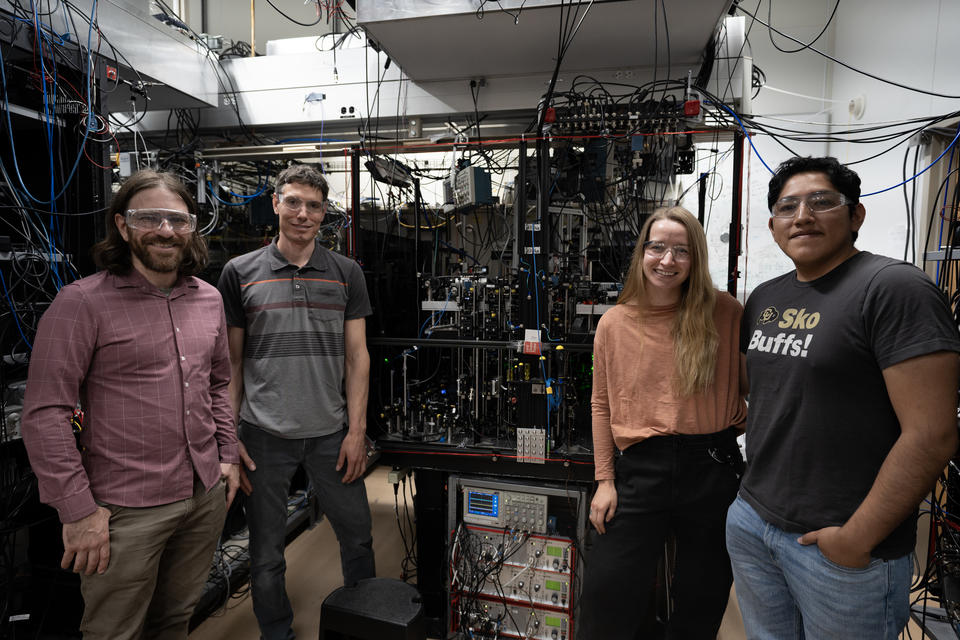
In a groundbreaking achievement, researchers at the National Institute of Standards and Technology (NIST) have set a new record for the most accurate clock in the world. The team has enhanced their atomic clock, which is based on a trapped aluminum ion, reaching an unprecedented level of timekeeping accuracy with 19 decimal places. This advancement marks a significant leap in the realm of optical atomic clocks.
The announcement comes as part of a broader effort to refine optical clocks, which are evaluated based on accuracy—how closely they measure the ideal “true” time—and stability, which relates to the clock’s efficiency in measuring time. The aluminum ion clock’s accuracy surpasses the previous record by 41% and is 2.6 times more stable than any other ion clock. This achievement is the result of two decades of meticulous improvements to the clock’s components, including its laser, trap, and vacuum chamber.
The findings were published in Physical Review Letters, highlighting the collaborative efforts of the NIST team. “It’s exciting to work on the most accurate clock ever,” said Mason Marshall, NIST researcher and lead author of the study. “At NIST, we get to carry out these long-term plans in precision measurement that can push the field of physics and our understanding of the world around us.”
Revolutionizing Time Measurement
The aluminum ion’s steady, high-frequency “ticking” rate makes it an exceptional candidate for timekeeping, surpassing the stability of cesium, which currently defines the scientific second. According to David Hume, the NIST physicist leading the project, the aluminum ion is less sensitive to environmental factors such as temperature and magnetic fields.
However, the aluminum ion presents challenges due to its difficulty in being probed and cooled with lasers, essential techniques for atomic clocks. To address this, the team paired the aluminum ion with magnesium, a process known as quantum logic spectroscopy. The magnesium ion aids in cooling the aluminum ion and synchronizes with it, allowing the clock’s state to be read through the magnesium ion’s motion.
“This ‘buddy system’ for ions is called quantum logic spectroscopy,” explained Willa Arthur-Dworschack, a graduate student involved in the project.
Overcoming Technical Challenges
Designing the ion trap posed significant challenges, as tiny movements known as excess micromotion were affecting the clock’s accuracy. Electrical imbalances in the trap created fields that disturbed the ions. The team addressed this by redesigning the trap with a thicker diamond wafer and modifying the gold coatings on the electrodes to correct the electric field imbalance. These refinements reduced the ions’ motion, allowing them to “tick” without interference.
Another hurdle was the vacuum system, where hydrogen gas from the steel chamber body was colliding with the ions. By reconstructing the chamber from titanium, the team reduced hydrogen levels by 150 times, extending the experiment’s duration without needing to reload the trap.
Furthermore, the clock required a more stable laser to probe the ions. The previous version of the clock needed weeks to average out quantum fluctuations caused by its laser. Collaborating with Jun Ye’s lab at JILA, which houses one of the world’s most stable lasers, the team transferred the laser’s stability to the aluminum clock. This enhancement allowed the clock to probe ions for a full second, improving stability and reducing measurement time from weeks to just a day and a half.
Implications and Future Prospects
The aluminum ion clock’s new record contributes to the global initiative to redefine the second with unprecedented accuracy, paving the way for scientific and technological advancements. Its improved capabilities also make it a valuable tool for exploring quantum physics and developing quantum technology.
More importantly, the clock’s reduced averaging time enables new measurements in Earth’s geodesy and offers insights into physics beyond the Standard Model, including the potential variability of fundamental constants.
“With this platform, we’re poised to explore new clock architectures—like scaling up the number of clock ions and even entangling them—further improving our measurement capabilities,” said Arthur-Dworschack.
The NIST team’s work exemplifies the synergy of precision engineering and theoretical physics, setting a new standard for timekeeping and opening avenues for future exploration.





